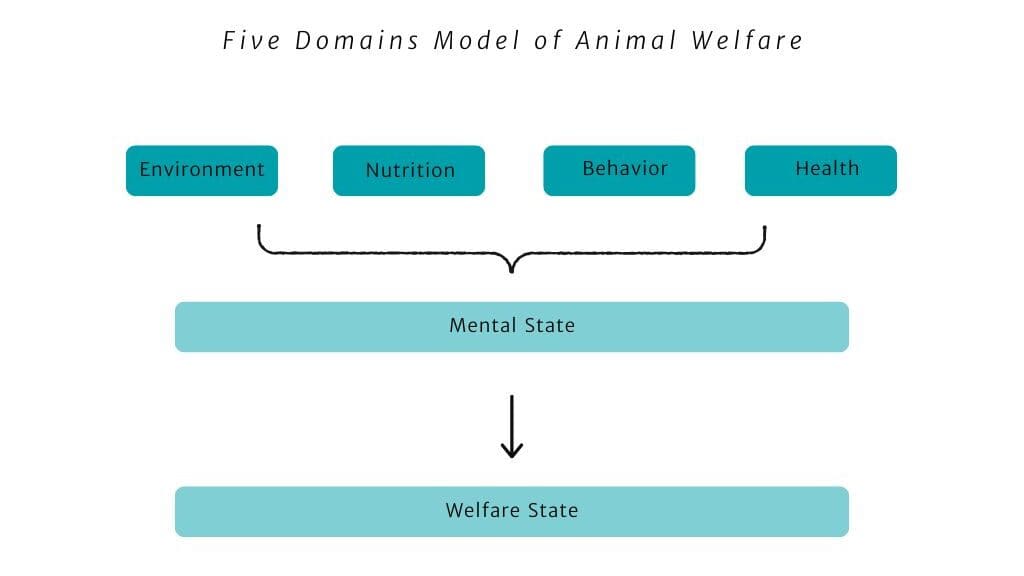The Five Domains Model of Animal Welfare
Current European Union legislation on animal welfare is largely based on the Five Freedoms introduced by Brambell in 1965 (see our bibliography). These freedoms include: freedom from hunger and thirst, discomfort, pain, injury, and disease, fear and distress, and the freedom to express normal behavior. Traditionally, ensuring an animal’s welfare has been seen as meeting these basic needs—reducing negative experiences like pain and fear, and allowing animals to engage in natural behaviors like moving and grooming. However, this view is limited in understanding what truly constitutes good welfare and how it can be measured.

While the Five Freedoms recognize that animals are sentient and can experience pain and other negative emotions, avoiding these states alone doesn’t guarantee a life worth living or a good life for the animal. Good welfare involves the animal experiencing positive emotions such as pleasure, confidence, interest, and a sense of control over its environment. It also includes opportunities for exploration, problem-solving, and getting enough physical and mental activity and rest. It’s important to consider how age-related changes might affect an older dog’s ability to experience positive welfare.
Modern scientific thinking suggests that assistance dogs should experience a good life at all stages of their career. Caretakers should strive to exceed the minimum legal standards for dog welfare and focus on minimizing negative experiences while providing opportunities for positive ones. This approach is based on the Five Domains Model of Animal Welfare, also sometimes called the Five Provisions and Welfare Aims. To achieve this, caretakers should have strong knowledge, skills, and empathy, enabling them to recognize and address welfare issues effectively.
The Five Domains Model of Animal Welfare allows for a clear, structured assessment of an animal’s welfare that is both comprehensive and coherent (D. Mellor 2017). The domains that it presents are relevant for the assessment and management of animal welfare in the care of humans. Both an animal’s internal and external states and circumstances can be assessed systematically through an evaluation of the animal regarding the first four domains that this model presents: “Environment”, “Nutrition”, “Behavior”, and “Health” – these four are the basis of, feed into and impact the fifth domain, “Mental State” (D. Mellor 2017; Hampton et al. 2023). Together, these domains provide a strong understanding and evaluation of an animal’s welfare state. The Five Domains Model of Animal Welfare, originally formulated in 1994, is regularly updated to incorporate emerging, authenticated developments in animal welfare science knowledge and expertise (D. J. Mellor et al. 2020).
The following is a summary of criteria considered for the Five Domains Model of Animal Welfare. This is by no means an exhaustive representation. Those interested in this topic are encouraged to read the referenced articles for a more in-depth understanding of this welfare model. Mellor (2017, 4) provides examples (not a full list) of factors that need to be in place, as a baseline, for positive and detrimental experiences within all five domains. The model created by Mellor allows for some structure and systematic assessment.


